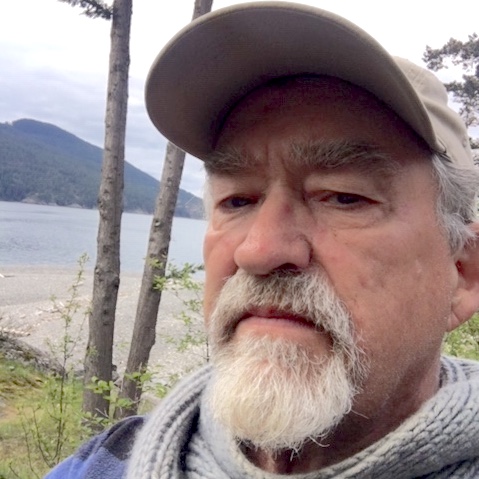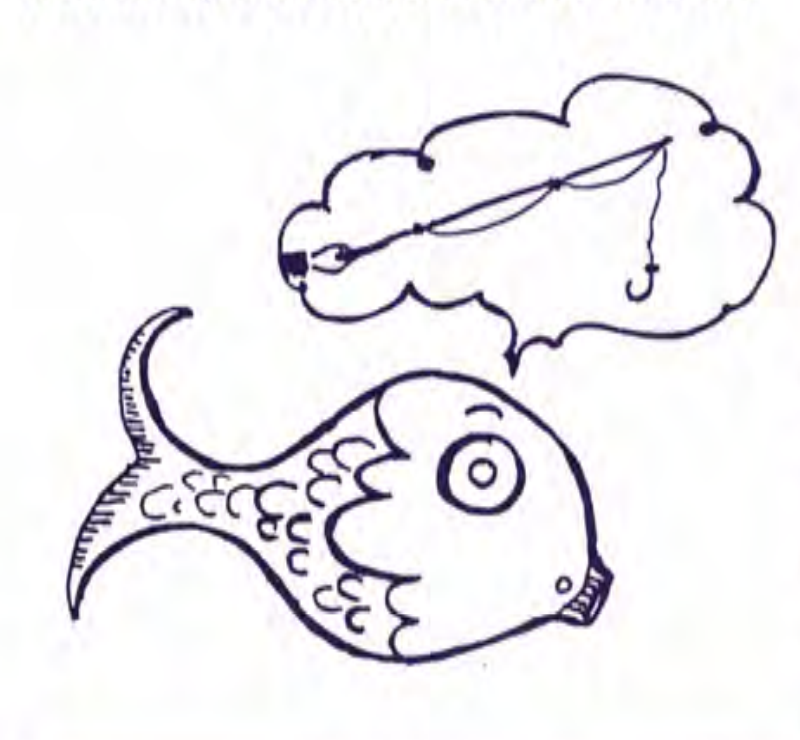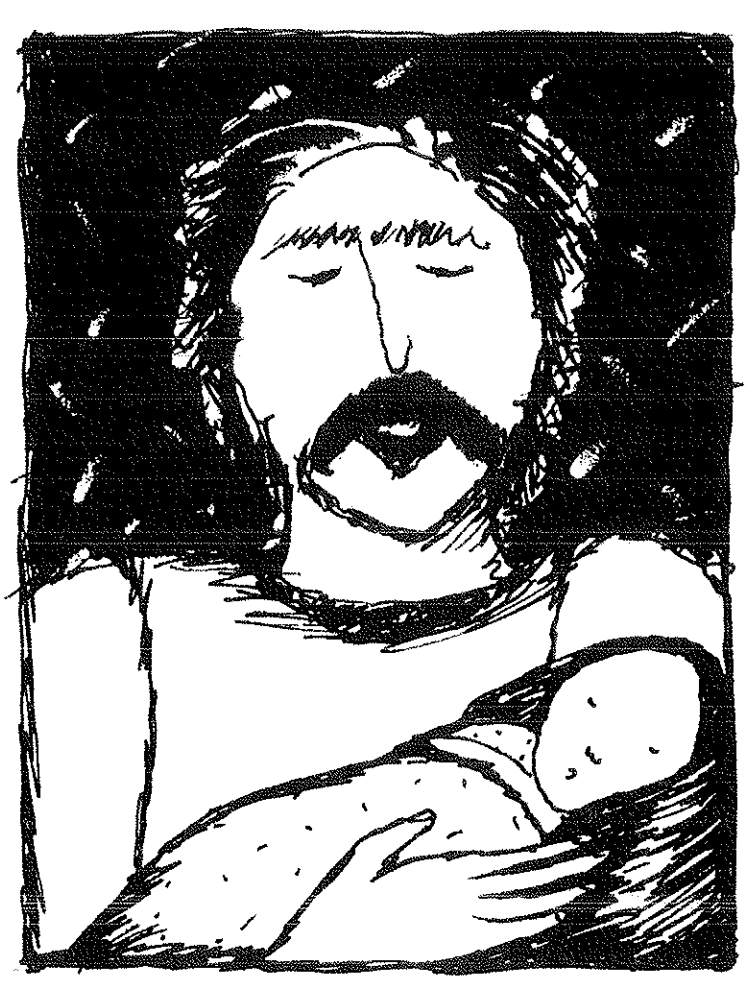Another issue in your mailboxes - I hope you like it. If the typeface seems a little uneven it's because we are trying out some different "looks", and would like your reactions. A special thank you to Dale Gottlieb for her gorgeous drawings, Jack Maguire for his lead article, editorial and typing assistance, Tom Cowan for editorial work and his regular column, as well as the other contributors and encouragers. The following people/groups have contributed $25 or more to this issue:
Sabina Folman, Dean McClanahan, Janet Booker, Bill Stimson, Leon Van Leeuwen's group, Kay C. Greene, Jenny Dodd's group, Robert Waggoner.
Those of you who haven't sent in your resubscription please check the right side of your label, it saves more reminder mailings. The DNB continues to pay for itself. I usually enclose extra forms for subscription to share with friends and family but I've been discouraged how few new subscriptions have resulted from this. We have no money for advertising and are dependent on word of mouth for new subscriptions. Please urge fellow dreamers to subscribe and send in those extra forms. Starting with the Nov/Dec issue the price regretably will rise to $15. The old $13 price will remain for any person for whom this is a hardship. We especially need short articles about your involvement with dreams, submissions for Dreams Come True, local listings of your area's dream events, anecdotes and poetry. Remember the SASE (self addressed stamped envelope). This is a network. Without feedback, sharing, suggestions and submissions, there will be little to publish. Summer seems to slow things down. Please share! If you want to remain anonymous, as the person who sent in material for Dreams Come True, this is fine, but send!
The most important function of our network continues to be connecting dreamers to dreamgroups or helping/encouraging dreamers to form their own. The DNB is actually a newsletter resulting from these networked contacts. We need also more news about individual dream groups. That's where the grassroots work is being done. Send me your request for a group and I'll send you the network contacts in your area, or if there are none, advice about starting up a group or doing dreamwork by phone, mail or computer. A dream journal is an excellent resource for expanding on the work done in a group, but dream sharing is essential. Meanwhile, interest in dreams in general is still growing. I have noted articles in Self Magazine, New York Times, the growth of The Association For The Study Of Dreams (The ASD), new titles on the shelves of bookstores and in psychically oriented magazines. If we wait for either the "phenomenologists" or the psychological experts to agree on the meaning of dreams, it'll be a long wait. The only expert is you, the dreamer. Any dream group, psychoanalyst, or psychic worth his/her salt knows this fact. A priori theoretical prejudices must not be inflicted on the dream or dreamer, as Monte Ullman has said. Dreamlife is too large and deep to be pinned into this or that theory, as Jack points out in his timely article (see front page). There is room for parapsychology, psychology, science and spirituality in working with dreams. But because everyone has a different opinion on these subjects, the editors of DNB agree that our sharing must be experiential. That is, working with the dream and the dreamer directly. If you have had a dream about the future, we'd like to hear about what it meant to you and your conclusions. But if you have a general theory about dreams and the future, with no dream experience to back up those ideas, this is what I mean by non-experiential. There is a place for pure research, but we are an organization trying to focus on the human concerns of the individual person, tied in to their dream and life experience "around" the dream. As a side benefit, people draw closer to one another and develope deeper self-awareness.
In my weekly dream group, of which the other two editors and the illustrator are members, we are continually surprised and delighted with the things we learn about ourselves, not necessarily always of a "heavy" or suppressed nature, but upbeat and encouraging. Here for example is a dream I shared with the group about the DNB, during one of my many self-doubting periods:
"I'm about to give a talk before a large audience. I go up to the lectern which is on a stage with my journal and Dale's portfolio of drawings. No one seems to notice me, which is fine. I wait for them to become attentive. I talk about this odd device accidentally discovered by an inventor, which causes people around it to feel good. This thing is called an "impeller". I realize that I have no notes. I ask someone nearby (because I seem to temporarily forget) "What is this device for again?" A student to my right sees me writing and copies my notes instead of taking his own. I assure him that he must develope his own notes.
The audience becomes attentive and I'm suddenly highly confident. I go to my left where I have a "demo" of how this experiment occurred. Various people help me to work it though they can't be seen. [I describe the historical experiment]:
A waterwall began falling onto the scientist, filled with heavy metals and threatening to harm him. He took a huge plastic tube and diverted the flow now on the floor into the tube and up onto the ceiling. In this manner The Impeller was dicovered."
This was one of those dreams that I knew the basic meaning immediately. The lecture was the DNB, complete with Dale's drawings. I was willing to be patient until people discovered what a beautiful thing dream sharing is. I didn't invent these processes. In my dream, the scientist is probably a combination of Bill Stimson and Monte Ullman, and I accidentally fell into dreamwork from my meditation work. The demo is an attempt to experientially demonstrate how beautiful and dynamic dreamwork is, as opposed to just talking abstractly about it. An impeller, in my experience, is a device which lifts water. Thus, dreamwork is a means to lift unconscious material into consciousness. The tube is transparent because dreamwork does not need to be complicated but is a "transparent" process of diverting unconscious material into understanding. I didn't invent these methods, but because they are simple and effective, anyone can use/understand them, and feel better as a result. .There is the potential for harm where no guidelines are followed. Especially, the atmosphere in which the dream is explored must be protective of the dreamer (or inventor).
After having this dream, I renewed my committment to The DNB, and adopted Montague Ullman's method for our dreamgroup and have had wonderful success with it, having tried many others before it. (Working With Dreams, co-author, Nan Zimmerman. Dell Press.)










